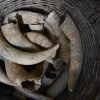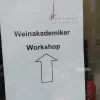Back in April, the Agricultural Marketing Centre (AMC) organized a two-day promotional event in the Swedish capital, Stockholm.
So what are the options to enter the Swedish market?
- Systembolaget
- Importers selling directly to restaurants
- Online sales
The monopoly market can be complicated and complex. The availability of the Systembolaget –owned by the Swedish state- differs from location to location; there are almost 500 stores plus several hundred so-called „agents” where people can pick up their online orders. One root to market is through the monopoly (e.g. a tender tasting). I recall a story from Grand Tokaj, where Systembolaget once wrote even a tender –which they won- specifically for sweet Szamorodni. Not only have they listed in the tender the minimum volume and maximum price with vintage(s) and minimum residual sugar but also described the style and taste profile, which is very accurate for what they’re looking for: „balanced sweet and fresh wine with hints of honey, tropical fruit, apricot and citrus.”
This highlight the tender specifications are chosen rigorously and based on set criteria.
Another root to market is through importers who are selling directly to restaurants. A much smaller share, a very competitive niche market, and great for smaller producers as well. I see a lot of exciting potentials here. Third option: online sales.
How are the Hungarian wines doing on the Swedish market?
Quick glance at the wines available at Systembolaget is a good indicator:
73 samples with Balaton (24) and Tokaj (22) leading as regions.
Digging deeper; the numbers –stats- will tell more:
Hungarian wines (all, from fizz to bulk…)
| Year | Litre | EUR | EUR / litre |
| 2021 | 2 780 761 | 3 762 012 | 1,35 |
| 2020 | 2 696 911 | 3 646 882 | 1,35 |
| 2019 | 2 853 025 | 3 879 319 | 1,36 |
| 2018 | 2 815 569 | 3 952 739 | 1,40 |
| 2017 | 2 460 842 | 3 736 108 | 1,52 |
| 2016 | 2 039 329 | 3 031 692 | 1,49 |
Tokaj
| Litre | EUR | EUR / litre |
| 24 686 | 289 635 | 11,7 |
| 14 492 | 197 962 | 13,7 |
| 12 290 | 160 836 | 13,1 |
| 10 109 | 149 413 | 14,8 |
| 17 504 | 216 825 | 12,4 |
| 11 475 | 153 372 | 13,4 |
Source: Hungarian National Statistic Bureau (KSH)
Photo credit: AMC
For Hungarian wines in general, the average price seems to be steady over a three-year period, a slight decrease however if you look at the bigger picture. The only other wine category which has separate statistics is Tokaj. A significant increase in volume over the years but no real increase in average price.
So there is still work to do when it comes to promoting Hungarian wines in Sweden, hence it was great to have the AMC with the Hungarian Embassy of Sweden, organized a two-day business event in Stockholm; business lunch for the press, a seated masterclass for other members of the trade as well as walk-around tasting to meet the producers and representatives of the companies.
Grouping the wines in styles
While Hungary notoriously is hard to communicate which region does what style of wine (as far too many grapes are permitted in the individual product speciation).
Mats Garb has a couple of really good articles on Hungarian wines at Vinsider on Hungarian wine regions and a general intro to Hungarian wines.
I try to group the wines from the masterclass tasting in styles, which may or may not be similar to the tenders communicated by the Systembolaget. Of course, there are many other criteria as mentioned above, like price and volume, etc.
Photo credit: AMC
White wine, fruity, medium to light bodied, refreshing acidity, straightforward with an aromatic profile
White wine with depth, medium to full-bodied, ripe stone fruit, spicy minerality
Red wine, red fruit drive, red berry driven, medium body, fresh acidity
Red wine, red- and black fruit-driven in style medium to full body, with medium to high tannins, complex and pronounced.
- Vylyan, Amphora Cabernet Franc 2020
- Günzer Family Winery, Cabernet Franc 2017
- Vesztergombi Winery, St. László Bikavér 2017
- 2HA Vineyard and Winery, Tabunello 2018
Sweet wine with complexity, medium body, fresh acidity, ripe stone fruit, honey and evidence of botrytis.
- Grand Tokaj, Grand Tokaj Szamorodni 2018
- Barta Winery, Barta Öreg Király Dűlő Tokaji Aszú Válogatás 6 Puttonyos 2013
I’m all in for clarity and transparency when it comes to wine communication and I do believe that despite the complexity, simplicity is important when it comes to delivering the message.









